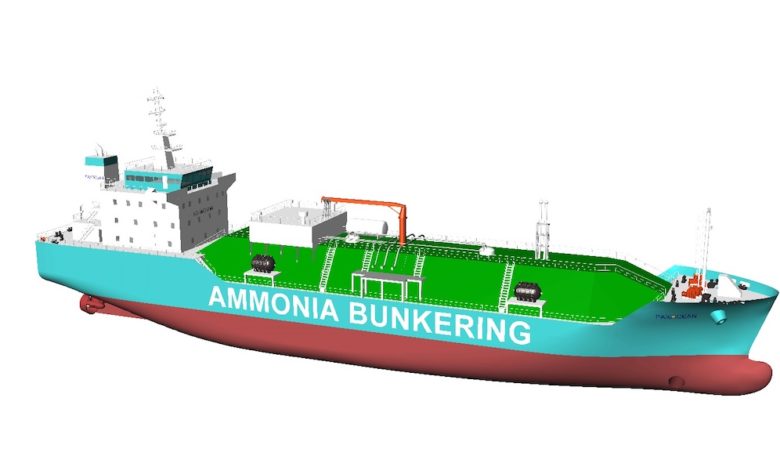How regulatory collaboration around ammonia can fuel sustainable shipping

The world is being compelled into urgent action to combat climate change. At the centre of this international push, the maritime industry is under increasing pressure to adopt sustainable practices and transition to alternative fuels especially now the International Maritime Organization has revised the industry’s greenhouse gas strategy, writes Kim Yeontae, an executive vice president at Korean Register.
To meet the recent agreed targets for low-carbon and zero-carbon fuels/energy source uptake for international shipping of at least 5%, rising to 10% by 2030, shipping firms and industry stakeholders now need to look for greener and cleaner means to power vessels with a renewed focus.
Ammonia has garnered attention as a potential candidate of a carbon-free form of energy due to its high energy density, similar to methanol and more favourable than hydrogen, and its zero carbon emissions. ‘Green ammonia’ can be produced using hydrogen from water electrolysis and nitrogen separated from the air, offering the possibility of sustainability throughout the energy supply chain.
International authorities are taking significant steps to integrate ammonia as a green energy source on ships, however, there are several uncertainties surrounding its use as a ship fuel. Primarily, toxicity is a concern and a barrier to the transition to mainstream use. Currently, use of toxic gas as a shipping fuel is unprecedented and prohibited under international regulations.
Despite this, the need for sustainable fuel options remains and transitional fuels such as LNG are not a permanent solution. Thus, regulatory efforts aimed at promoting the safe and efficient use of ammonia are being introduced to mitigate the challenges faced in its implementation.
Regulatory bodies have introduced several measures to facilitate ammonia’s adoption and ensure its safe handling. The IMO is developing guidelines and regulations to govern the use of ammonia as a marine fuel, which are expected to come into force in 2025.
While ammonia appears to offer a solution, especially as the ability to retrofit traditional engines to be able to use ammonia is feasible, an internationally accepted comprehensive guidance on the design, construction, and operation of ships utilizing ammonia as fuel still needs to be fleshed out.
This also includes safety considerations and specific requirements for handling, storage, and bunkering procedures, ensuring that risks associated with ammonia usage are mitigated.
As a result, classification societies are looking to drive the high standards needed for ammonia as a green fuel.
Ammonia is already used in land-based industries and ammonia cargoes are transported by ship. Ammonia handling on land has advanced the technology massively and proven the effectiveness of safety standards. The use of the fuel on ships, however, requires further consideration. Ships have limited external support available to assist with an accident, so incidents need to be handled by onboard crew.
The focus needs to be put on preventative safety measures to ensure that leaks do not occur, rather than taking remedial safety measures after a leak takes place.
Tanks need to be protected against collision and fire. Additionally, feasible gas treatment systems to minimize the leak and a safe area for the crew on board should be installed.
However, to scale the production, bunkering and adoption of ammonia as a marine fuel collaboration across the industry is essential. The entire sector, from the shipowner to the classification society and international regulator, must work harmoniously to draw up robust regulations, provide expertise, certify compliance, assess risk, and share essential knowledge to facilitate the successful deployment of ammonia fuelled vessels.
